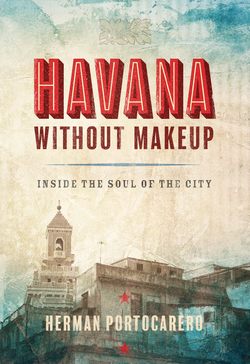Читать книгу Havana without Makeup - Herman Portocarero - Страница 24
На сайте Литреса книга снята с продажи.
Оглавление17.GOOD MONEY, BAD MONEY
It became a classic case of good money, bad money. Only in late 2004 was the dollar fully replaced by the so-called peso convertible of equal value. But the non-convertible peso or moneda nacional remained in circulation. The convertible peso is in fact not all that convertible, except one-way, from dollar or Euro, or any other real-world currency, to the CUC as it’s known for short, but never the other way around. The main purpose of its introduction was to make retail and services twenty-five times more expensive than any price in the national peso, both for tourists and for Cubans lucky enough to own dollars.
It was unavoidable that more and more products would slide to the CUC-denominated commerce. But at the same time, all Cuban salaries were paid in moneda nacional, in a country where literally all employment depended on the State. This created a growing gap between the CUC market and the purchasing power of the average Cuban citizen. People with access to dollars and CUC could make do, whether the good money came from steadily growing remittances from family members in Miami, from tips in the expanding tourist industry, from the few tolerated private sector activities, or from shady dealings in Havana’s night life.
For the others, the rationing booklet or libreta, providing basic foodstuffs at highly subsidized prices in state bodegas, was the only rescue. In better times, the State had provided all staple foods – rice, beans, chicken, eggs, cooking oil, bread, sugar, coffee, powdered milk – in sufficient quantities to maintain a balanced diet. There were also allowances for clothing, personal hygiene, and special packages for pregnant women. But as a consequence of the double money standard, more and more products disappeared from the subsidized network and ended up being available only in CUC. Those without access to it saw their diet and their basic comforts slip away.
Because Cuban agriculture is dramatically deficient – most of the cultivated land having been devoted to sugar cane, and a lot lying fallow – between 65 and 80 percent of all foodstuffs have to be imported, paid for in hard currency, and sold to poorer people at prices way below their cost. The weight of all this on the national budget is huge, made worse by the fact that the country now also has to feed more than three million tourists each year.
The government was and is well aware of all the social consequences this entails, especially the growing inequality between Cubans with and without CUC access. Economic reforms to remedy these ills went ahead in the second half of the 1990s. These included allowing more private activity and closing down sections of a largely unproductive public sector, attracting foreign investment to create better paying jobs, and attempts to improve the country’s own food production.
These reforms were carried forward with support from Europe and Canada, but that support was never entirely unconditional. It was always somehow linked to a political discourse insisting on greater citizens’ freedoms. Cuba swallowed this out of sheer necessity, and even Fidel Castro lent a diplomatic half-ear to this discourse during the frequent nighttime meetings with ambassadors that became part of his routine.
But then there was a spectacular new development.
In early 1999, Hugo Chávez came to power in Venezuela. He saw himself as Fidel’s spiritual heir and started to provide support that was not just unconditional, but based on a strong political sense of brotherhood. Cuba’s leadership now believed that their original dream, rescued from economic tatters, could be resuscitated and maintained forever.
The effects in Havana were immediate and tangible. Simply put: Chávez’s generous supply of cheap oil brought back the electricity, and turned on the lights and the fans (or ACs for the happy few) for the long hot summer nights in Havana’s crowded rooms and buildings. There is no denying that the people were grateful.
Chávez’s support allowed Cuba’s ruling elders to delay fundamental economic reform for another ten years, and the incipient reforms undertaken from sheer necessity since 1995 were either frozen or implemented with dragging feet.
